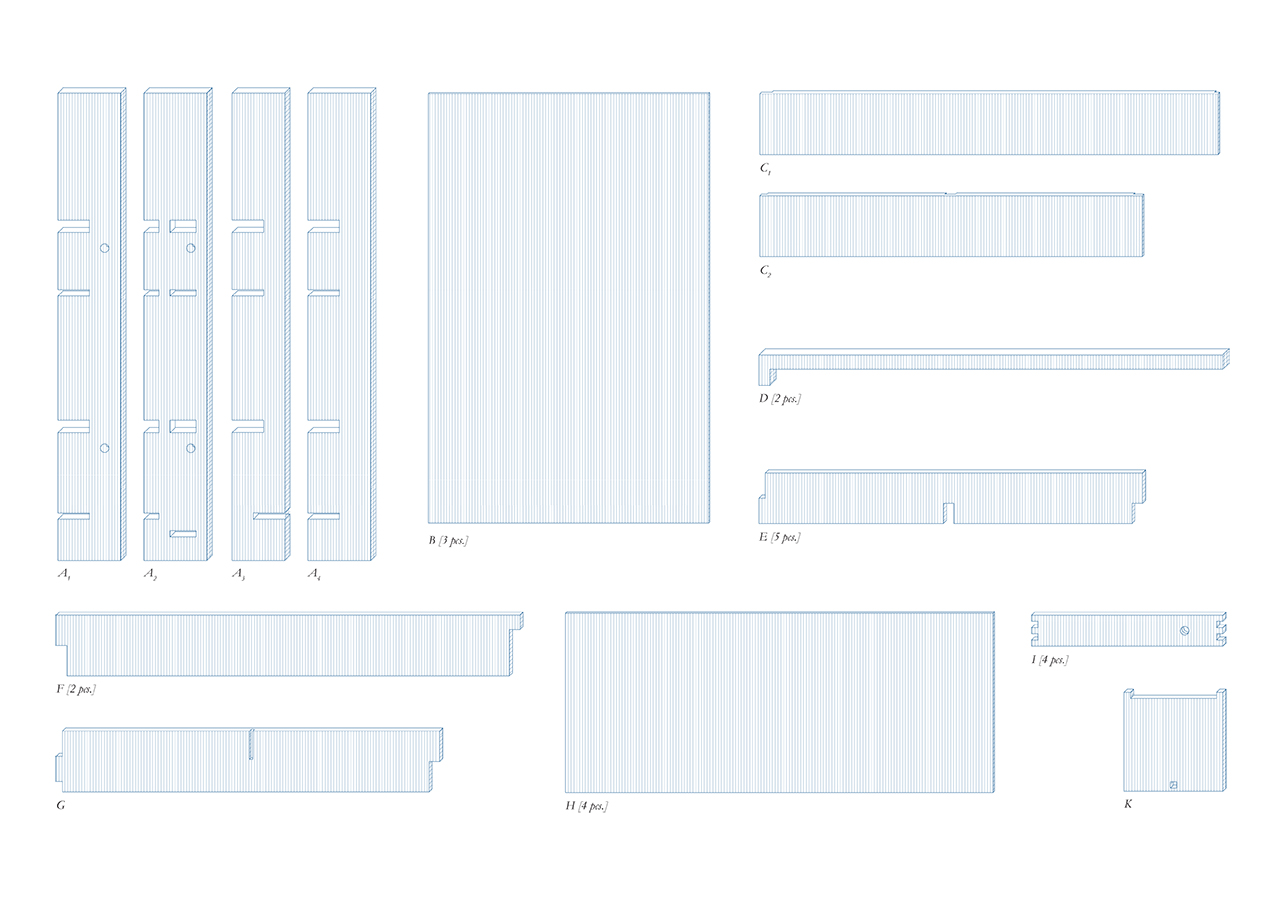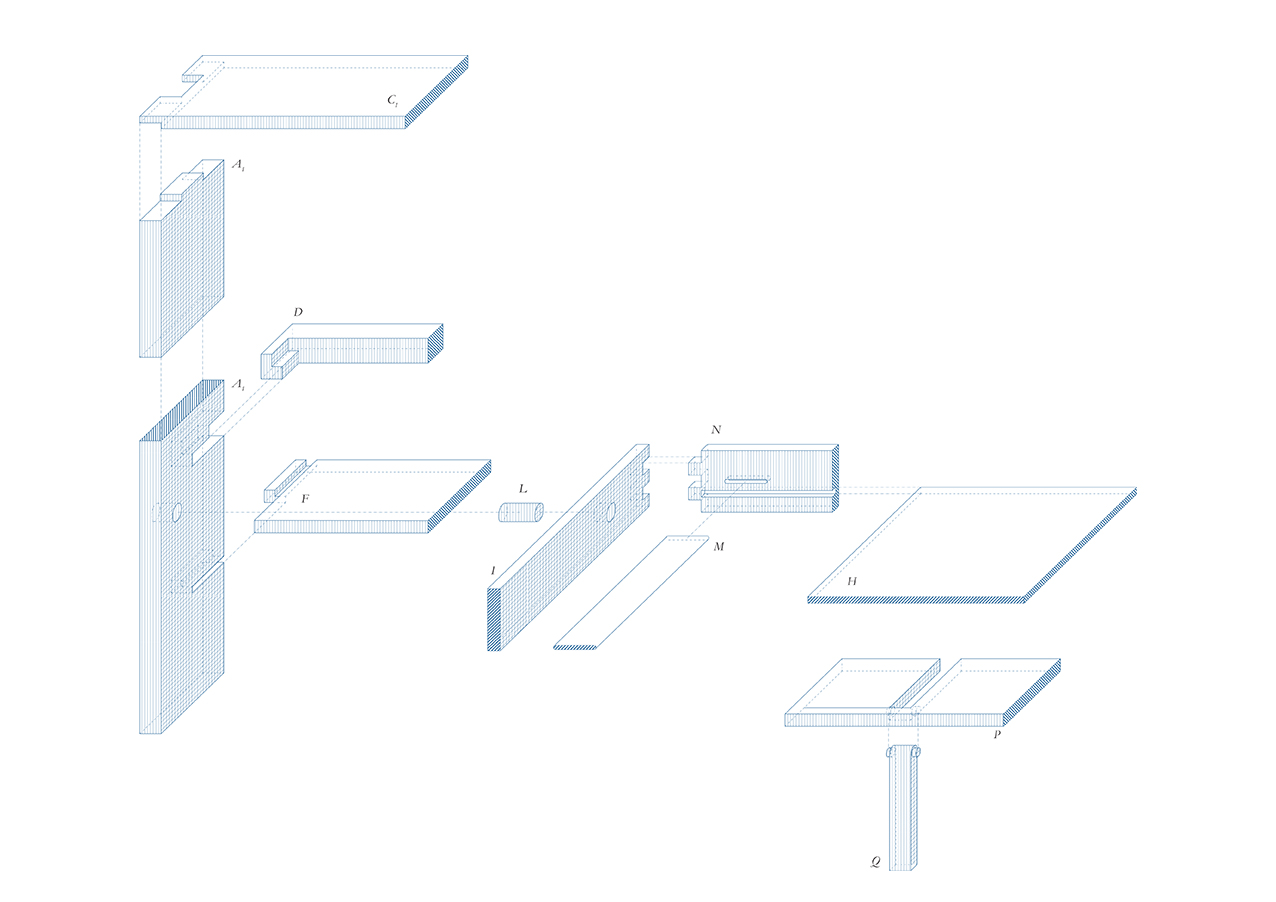TAAC
TAAC is the winning proposal in the competition “Six Square Meters” held by Ordine degli Architetti PPC di Lecce, supported by: Ministero della Giustizia Dipartimento dell’Amministrazione Penitenziaria – Direzione Casa Circondariale di Lecce; Università del Salento; Fondazione Banca Popolare Pugliese; Ance Lecce and the patronage of the Regione Puglia, Comune di Lecce and Consiglio Nazionale degli Architetti Pianificatori Paesaggisti e Conservatori.
1. Value and aesthetic appeal
TAAC is a compact piece of furniture for prison, made entirely of wood and designed to adapt to co-habitation needs of two individuals for daytime and nighttime activities (Figure 6 and 7). TAAC is composed of 3 assembled macro-elements, the wall cupboard (figs 1a and 1b), the folding table (fig.1c) and the bathroom furniture (fig.1d), able to adapt to each other to make the most of the limited space of the cell.
The wall cabinet is the main element: in a volume of 305 x 3950 x 2165 mm it contains shelves for the personal equipment (fig 5, duly divided symmetrically) and the two folding beds (net surface area) of 840 x 2010 mm and free space between them of 840 mm. This macro-element is made with only 17 cuts (fig 3).
The folding table, made with 3 cuts, is formed by a panel leaning against and fixed to the wall, equipped with holes for hanging objects and accessories for daily use, and the single leg table (surface floor of 1270 x 800 mm); the two chairs made with 4 cuts are the only mobile elements not fixed to the ground or to the wall.
The bathroom furniture is composed of a piece of furniture that contains the sink and a mirror in the upper part: realized with 5 cuts of wood plus the mirror.
2. Innovation and creativity
The innovative aspect of TAAC is the mono-directional interlocking assembly system (figure 4): wooden cuts are assembled starting from the pieces leaning against the wall up to the most external one, without the aid of iron elements (screws, nails) to be eventually glued. This system allows the complete mitigation of every possible blunt edge, the reduction of skills for assembly and the development of logical capabilities in the production phase in the workshop. In this sense, the relationship between man and product is enriched by the component of appropriation of the object by the user and the manufacturer, for the definition of a private and intimate space.
3. Safety, functionality, hygiene and ease of inspection
The system proposed by TAAC uses three types of movements: folding (beds and table), sliding (doors macro-element wardrobe) or with a shutter (bathroom furniture). All the pieces are fixed with movable wooden joints, not extractable once the whole element has been assembled. The absence of any joint or fixative element in metal is a choice regarding the safety of the entire furniture.
The perfect adherence of the pieces to each other and to the elements on the wall as well as the easy assembly preclude the formation of non-inspectable cavities and double walls.
4. Durability and ease of maintenance / repair
The use of a limited number of 28 total cuts for the complete realization of the furniture makes the production easily reproducible, even in case of replacement or maintenance of a single element. The use of the joints makes the replacement process reversible.
5. Sustainability and simplification of the production cycle
The use of wood (both in the poplar and in the beech hypothesis, fig.2) as a whole material organic treated with ecological and natural oil and background excludes any latent toxicity due to wear of surfaces.
All the necessary elements derive from commercial multilayer cuts, easy to procure and deal with manpower of the prison.
Collaborators:
Allegra Aprea e Matilde Parravicini








